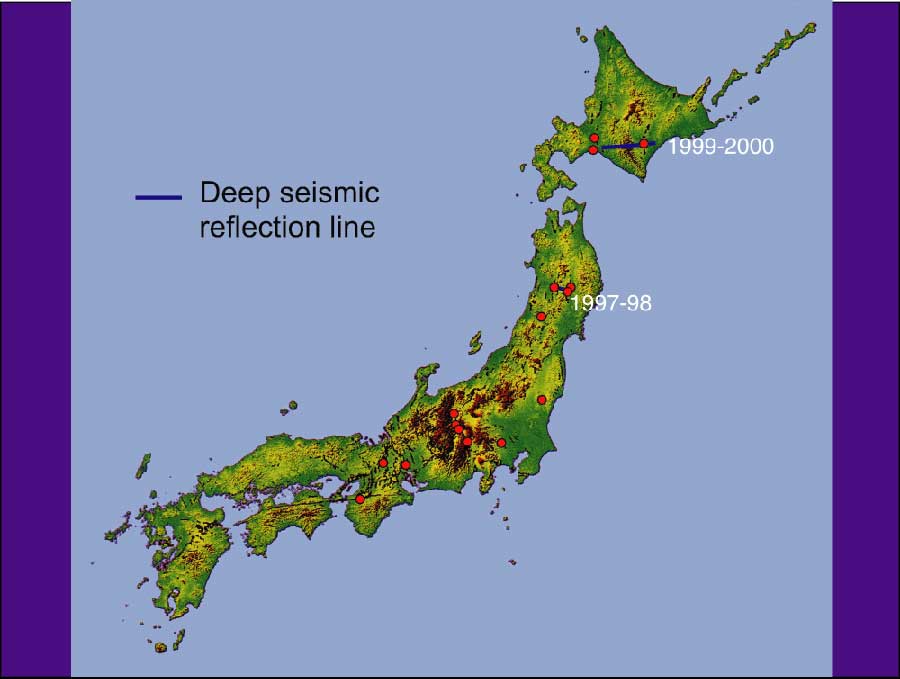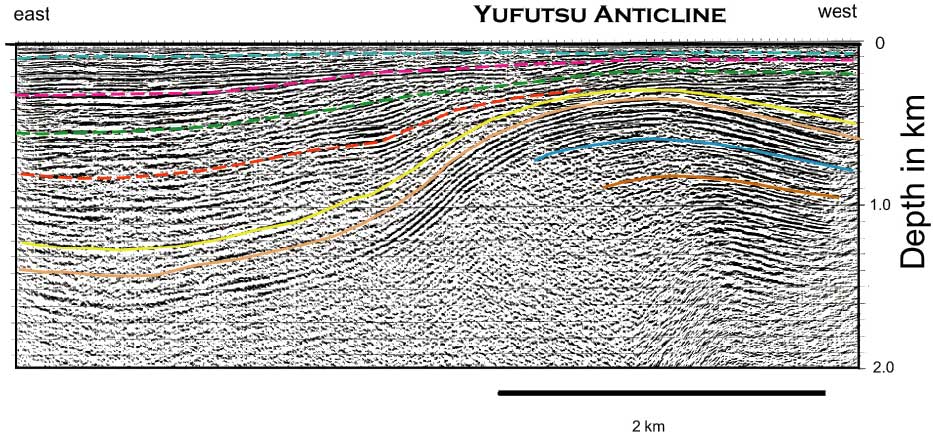6-2. Imaging of active faults by seismic reflection
profiling
Knowledge of the subsurface geometry of active faults, especially
the geometry of seismogenic
faults, is key to understanding active tectonic processes and assessing
the future's destructive
earthquakes. To reveal the relationship between surface active-faults
and deep seismogenic faults, a
seismic reflection profiling system was introduced to the Earthquake
Research Institute after the
Hyogo-ken Nanbu earthquake of 1995. Since 1996 seismic reflection profiling
across active faults has
been carried out under cooperation with groups of Japanese universities
and government research
institutions (Fig. 1). The active faults in Northern Honshu and Hokkaido
have been focused as one of
the programs of multidisciplinary investigations on deformation processes
of island arc crust. Seismic
reflection profiles were also acquired from active faults which show
the higher slip rate, such as
Itoigawa-Shizuoka Tectonic line and Median Tectonic line active fault
systems. Through seismic
reflection profiling, subsurface geometry of active faults has been
revealed, such as a flat and ramp
structure in the upper most crust (Fig. 2) and active growth fold by
blind thrust (Fig.3).

Fig.1. Location of shallow reflection seismic profiles acquired by
cooperative projects.

Fig.2. Seismic reflection profile across the Senya fault, northern
Honshu, Japan.

Fig.3. Seismic reflection profiles across the Yufutsu anticline,
eastern Tomakomai,
Hokkaido, Japan.
Top Next


